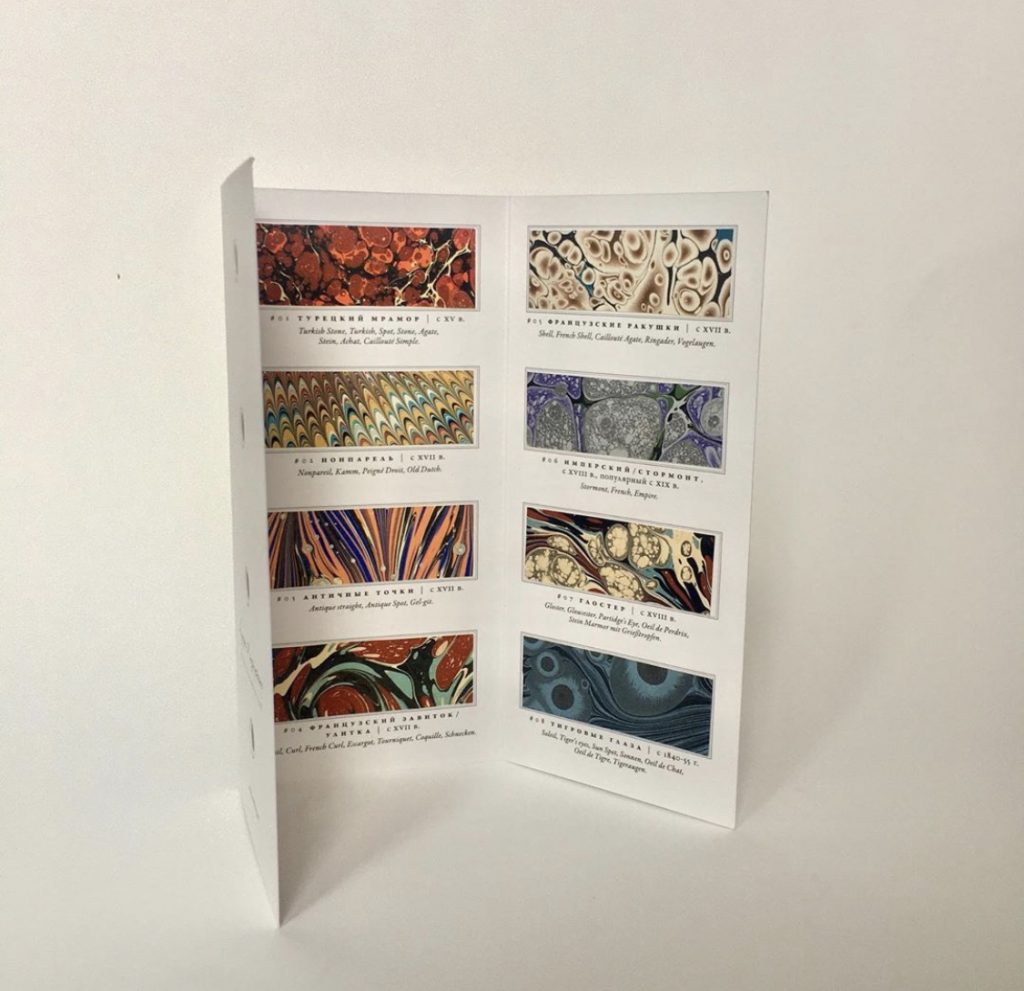Conference
Science conference in Saint Petersburg
On the 22-23rd of November, 2019, I attended an international bookbinding conference called “The Art and Technologies of Bookbinding. The History and Practice of Bookbinding” in Saint Petersburg.
Now that the dust has settled, I’d like to share my insights and observations. Most of my insights, however, are about something that is very near and dear to me: paper marbling, and so I will leave other fields to their respective professionals.
Marbled paper takes up a miniscule part in the process of bookbinding, but I’m happy that it is starting to receive more attention in Russia. Out of the 24 lectures, one of them was about marbling. Russian marbled paper master Jekaterina Seveljeva has been invited to attend these events several years in a row. I’ve noticed that the lecture itself received interest from attendees, and questions regarding the evolution of paper marbling were asked.
Another, very interesting issue being raised in Russia, is the need for uniformity and classification in bookbinding terminology. Current situation is somewhat similar to what is happening in Lithuania, a lot of the terminology currently being used is either english, french, other, or even self-made, used in small, local master circles.
As you might have guessed, that also applies to paper marbling, as we can hear multiple ways of describing this technique. During the conference, I noticed three different ways used by masters : marbled paper, ebru, and paper patterned by floating paint. This usually leads to questions among masters themselves, do different names mean different techniques being used? Is it just the same technique? If so, why are we using different names for it?
A similar situation occurs in historical paper marbling pattern classification. I’ve noticed that as of writing, in Russia, there is no real way of knowing which classification could be used to establish uniformity of historical pattern names. Turkish school of this trade is pushing the envelope in that regard, however, even though the Central Asian part of marbling history is very large, it is still only a part of development of marbled paper.
Concluding the impressions from the the conference, I’d like to note that the development of marbled paper, and the classification of patterns is very pertinent in Russia. There are already a few articles and some specialists getting into the heart of the matter. The academic community is willing to sit at the round table, for a scientific discussion aimed at achieving uniformity in pattern naming, as well as a deeper examination of paper marbling in general.
I also made a leaflet for conference attendees, with examples of twelve classical marbled paper patterns, their names, alternative names, and their predominant age. Leaflets are in Russian, you can purchase them HERE.

